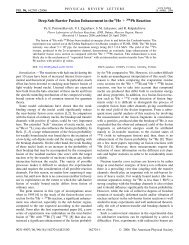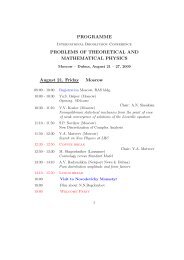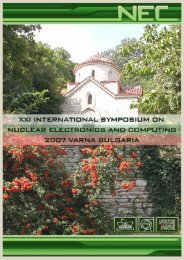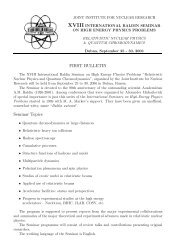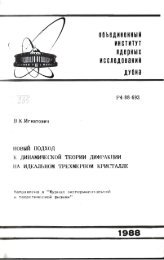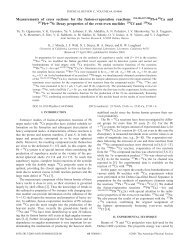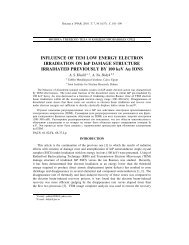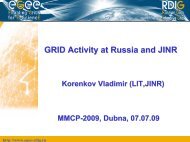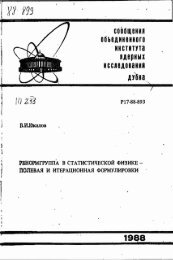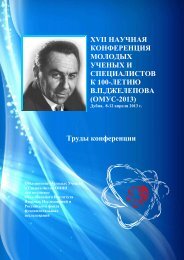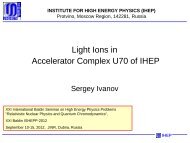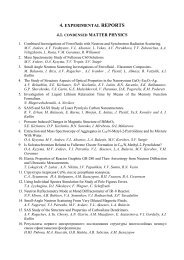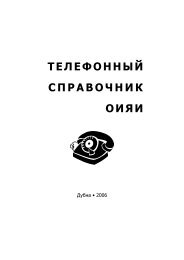Joint Institute for Nuclear Research Relativistic ... - Index of - JINR
Joint Institute for Nuclear Research Relativistic ... - Index of - JINR
Joint Institute for Nuclear Research Relativistic ... - Index of - JINR
Create successful ePaper yourself
Turn your PDF publications into a flip-book with our unique Google optimized e-Paper software.
INVESTIGATION OF THE POSSIBILITY TO USE ION BEAMS FOR ADS<br />
THROUGH SIMULATION IN GEANT4<br />
M. M. Paraipan 1,2 , A.Baldin 1 , M.Kadykov 1 , S.Tyutyunnikov 1<br />
1<br />
<strong>Joint</strong> <strong>Institute</strong> <strong>for</strong> <strong>Nuclear</strong> <strong>Research</strong>, Dubna, Russia<br />
2<br />
<strong>Institute</strong> <strong>of</strong> Space Sciences, Bucharest-Magurele, Romania<br />
Proton and ion beams with the initial energy between 0.2 AGeV and 10 AGeV were<br />
analyzed with respect to the neutron production in different targets, the number and spatial<br />
distribution <strong>of</strong> fission acts and the energy deposited in uranium targets. In this energy range<br />
two models <strong>for</strong> the hadronic inelastic interaction are suitable: bertini cascade and binary<br />
cascade. In thin and medium thickness targets both models produce results in good agreement<br />
with the experimental data. In very thick targets the use <strong>of</strong> binary cascade gives neutron<br />
production about two times lower than the bertini cascade and the experimental data. For this<br />
reason the last model was chosen <strong>for</strong> the modeling <strong>of</strong> the hadronic inelastic interaction. In<br />
large uranium target the total number <strong>of</strong> fission acts ( the energy deposited) per incident<br />
particle, reported to the energy spent to accelerate the particle and to the total number <strong>of</strong><br />
fission acts (the energy deposited) per incident proton with the same energy per nucleon<br />
increases with the mass number <strong>of</strong> ion. Such dependence <strong>for</strong> the number <strong>of</strong> fission acts shows<br />
a quick rise <strong>for</strong> ions until Fe, followed by a slower increase. The simulations per<strong>for</strong>med show<br />
that from the point <strong>of</strong> view <strong>of</strong> the energetic balance (neglecting the problem <strong>of</strong> a suitable<br />
beam intensity) it seems more useful to accelerate at the same energy per nucleon, ions with<br />
mass number between Ca and Fe, than protons.<br />
103



